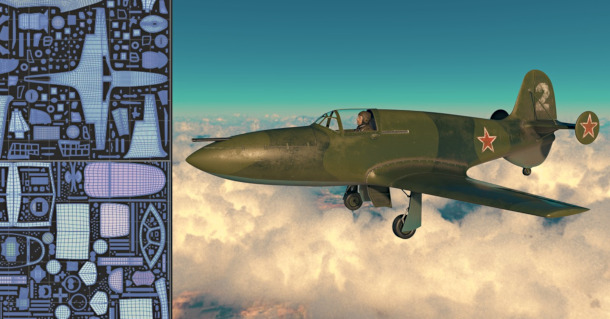Rizom-Lab releases RizomUV 2019.1 VS and RS

Rizom-Lab has shipped RizomUV 2019 Virtual Spaces (VS) and RizomUV 2019 Real Space (RS), the latest updates to its family of UV unwrapping software.
The releases add a new Lua scripting panel, improve snapping workflow, and extend FBX export.
New Lua script launcher panel, plus improvements to workflow and FBX export
Changes in the RizomUV 2019 updates include a script launcher panel for running Lua scripts from the UI.
Rizom-Lab has also introduced a supporting script library, which currently includes a starter script for finding similar edges to the one selected on a model, and unwrapping and packing UVs accordingly.
Workflow changes include the option to set the snapping distance for both point and grid snapping based on absolute distance, viewport zoom level, or the grid itself.
Both of the software’s viewports can now display only flattened or only unflattened UV islands, or both.
FBX export has also been extended, with UDIMs, tile geometry, UV island groups and island properties now saved in FBX files; while a model’s old UVs are now erased by default when exporting multiple UV sets.
There are also changes to the way UV islands are stacked, plus a number of smaller new features and UI changes: you can find a full list via the link at the foot of the story.
Updated 6 December 2019: Rizom-Lab has released RizomUV 2019.1 VS and RizomUV 2019.1 RS.
The update moves the Linux edition of the software, previously available in beta, to a stable production release. It is compatible with Ubuntu 14.0 and above and CentOS 7.6.
Workflow improvements include the option to generate stacked groups from overlapped UV islands, and to switch the up axis of the 3D viewport between the X, Y and X axes to fix orientation issues when importing from Blender or Maya.
The software’s scripting capabilities have also been extended. Find a full list of changes via the link below.
Pricing and system requirements
RizomUV 2019.1 VS and RizomUV 2019.1 RS are available for 64-bit Windows 7+, macOS 10.12.5+ and Linux. The 2019.1 updates are free to licensed users.
The two editions have similar features, but whereas VS is designed for games and VFX, RS is designed for product design, and works in unnormalised UV space, respecting the dimensions of the original model.
Licensing varies between Indie users – artists and companies earning under €100,000/year – and Pro users.
Indie users get the option to rent to own or buy a perpetual licence; Pro users get a rental-only model. Indie licences of both types are node-locked to two computers, while Pro users can also rent floating licences.
For RizomUV VS, a perpetual licence costs €149.90 (around $167) and rent-to-own costs €14.90/month ($17/month). Pro licences cost €34.90/month/token ($39/month/token).
For RizomUV RS, a perpetual licence costs €299.00 (around $332) and rent-to-own costs €29.90/month ($33/month). Pro licences cost €59.90/month/token ($67/month/token).
There are third-party integration plugins for 3ds Max, Blender, LightWave, Maya, Modo and ZBrush.
